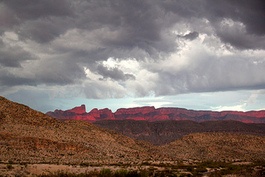Weather is always a concern when it comes to drilling. Work crews are out in the elements, working with heavy, tall equipment that reaches high in the sky and deep into the earth. The drilling sites are often in locations where wind and water like to flow as well. All of these conditions can prove hazardous to drilling crews, which is why safety and awareness is vital.
When putting together a drilling project, a major part of the planning is how to handle potential hazards, like weather. Quite often, they address specific conditions, depending on the job site and time of year.
Here are five of the common weather hazards that drilling crews may face on projects based in Texas, Oklahoma, and New Mexico:
- Lightning - Because drilling equipment can be very tall, it provides a natural conduit for lightning. When faced with the potential of lightning, crews need to withdraw the equipment and get into an area of safety to prevent damage to the equipment and to keep themselves safe.
- Tornadoes - The big storms that mark spring and summer in this part of the world bring with them tornadoes. The high winds and unpredictable paths make it very dangerous for drilling crews to be in the vicinity of potential tornadoes. When warnings and watches go out, the drilling equipment and crews go in.
- Thunderstorms - Thunderstorms are a natural accompaniment to lightning. They also bring large amounts of water that can make a drilling site a safety hazard. A muddy site means slips and falls can happen and it bogs down drilling equipment movement.
- Flash floods - Some drilling projects happen in areas that get flash floods. When storms deposit large amounts of water in an area upstream, those downstream can get overwhelmed with massive amounts of water very quickly. Crews monitor for flash flood warnings constantly to prevent being stranded or run over by flood waters.
- High winds - Drilling equipment often has a high center point of gravity. that makes it easy to tip over in high winds. These winds also carry debris which can strike crew members and the equipment, causing untold damage. High wind warnings often drive crews to safety.
Each hazard presents its own problems to drilling crews. They must constantly monitor weather not only in the immediate area, but in adjacent areas for maximum safety. While drilling companies make a point in giving quick, responsive service, safety is always the top priority. Work may be delayed during periods of bad weather to ensure the crew and equipment remain safe.
If you need environmental drilling in Texas, Oklahoma, or New Mexico, contact Talon/LPE. We have several offices throughout the region. We provide drilling services to companies, government agencies, and private individuals, and safety is always our top priority.

